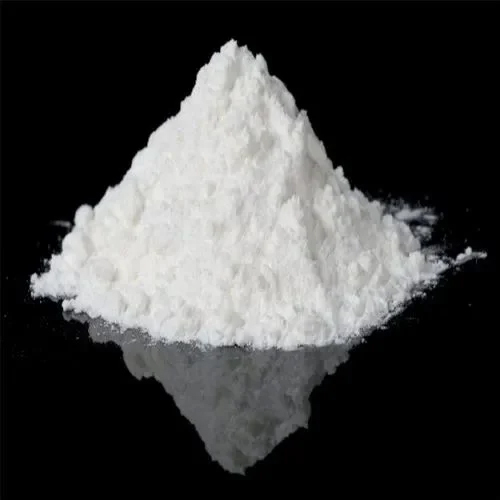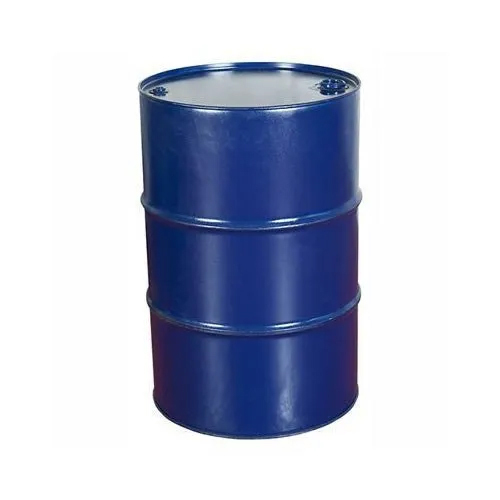Welcome to Our Company
Titanium Dioxide
Product Details:
- Density 4.23 Gram per cubic centimeter(g/cm3)
- CAS No 13463-67-7
- Molecular Weight 79.866 GSM (gm/2)
- Shelf Life 12 Months
- Purity 99%
- Application Industrial
- Solubility Water
- Click to View more
X
Titanium Dioxide Price and Quantity
- 5000 Kilograms
Titanium Dioxide Product Specification
- 1,843 C
- Room Temperature
- Water
- Industrial Grade
- Powder
- TiO2
- 4.23 Gram per cubic centimeter(g/cm3)
- 99%
- Industrial
- 12 Months
- 79.866 GSM (gm/2)
- 13463-67-7
Titanium Dioxide Trade Information
- 7-10 Days
Product Description
Titanium dioxide (TiO2) is a naturally occurring white, powdery substance that is commonly used as a pigment in various industries. It is produced from the minerals ilmenite, rutile, and anatase. Titanium dioxide has a wide range of applications due to its unique properties, including its high refractive index, high opacity, and chemical stability.
Some of the most common uses of titanium dioxide include:
1. Pigment in paints and coatings: Titanium dioxide is widely used as a white pigment in paints, coatings, and inks due to its excellent light-scattering properties, which result in a bright, white appearance and enhanced hiding power.
2. Sunscreen: Titanium dioxide is used in sunscreens and other cosmetic products due to its ability to block and scatter UV rays, providing protection against the harmful effects of the sun's ultraviolet radiation.
3. Food and pharmaceutical industry: It is used as a food additive (E171) to whiten and brighten various food products like candies, dairy products, and chewing gum. In pharmaceuticals, it is used as a coating for tablets and capsules.
4. Plastics and rubber: Titanium dioxide is used in the production of plastics and rubber to improve their opacity and whiteness.
5. Ceramics: It is used in ceramic glazes to enhance opacity and provide a glossy finish.
6. Paper: Titanium dioxide is used in the paper industry to improve the opacity, brightness, and whiteness of paper products.
7. Photocatalyst: Titanium dioxide is a photocatalyst, meaning that it can accelerate certain chemical reactions when exposed to ultraviolet light. This property finds applications in water purification, self-cleaning surfaces, and air purification.
Titanium Dioxide Properties:
- CAS Number : 13463-67-7
- Chemical formula: TiO2
- Molar mass: 79.866 g/mol
- Appearance: White solid
- Odor: Odorless
- Density: 4.23 g/cm3 (rutile); 3.78 g/cm3 (anatase)
- Melting point: 1,843 degree centigrade
- Boiling point: 2,972 degree centigrade
- Solubility in water: Insoluble
- Flash point: not flammable
FAQ:
Q. What is titanium dioxide, and how is it produced?
Ans: Titanium dioxide is a naturally occurring white pigment produced from minerals like ilmenite, rutile, and anatase. It is typically extracted through various chemical and physical processes, including mineral sand mining, sulfate or chloride processes, and purification techniques.
Q. What are the main applications of titanium dioxide?
Ans: Titanium dioxide is used as a white pigment in paints, coatings, plastics, inks, paper, and ceramics. It is also a key ingredient in sunscreen and cosmetic products, where it provides UV protection. Additionally, it has applications in food, pharmaceuticals, water purification, and air purification.
Q. Is titanium dioxide safe to use in consumer products?
Ans: Titanium dioxide is generally considered safe for use in consumer products. However, concerns have been raised about its nanoparticle form, as these particles can potentially penetrate the skin or respiratory system. Most regulations require that nano-sized titanium dioxide particles used in consumer products meet specific safety standards.
Q. How does titanium dioxide provide UV protection in sunscreens?
Ans: Titanium dioxide acts as a physical sunscreen by reflecting and scattering UV radiation away from the skin. It forms a protective barrier on the skin's surface, preventing the harmful effects of UV rays, such as sunburn and skin damage.
Q. What is the photocatalytic property of titanium dioxide?
Ans: Titanium dioxide exhibits photocatalytic activity, meaning it can accelerate certain chemical reactions when exposed to ultraviolet (UV) light. This property allows it to break down organic pollutants in the air or water, making it useful for self-cleaning surfaces, water purification, and air purification applications.
Q. What are the different forms of titanium dioxide used in consumer products?
Ans: Titanium dioxide is available in different forms, including rutile and anatase. Rutile titanium dioxide is more commonly used in paints and coatings due to its higher stability and hiding power, while anatase titanium dioxide is often preferred for photocatalytic applications.
Q. Does titanium dioxide have any environmental impacts?
Ans: Titanium dioxide is generally considered to have low toxicity and does not pose significant environmental risks in its traditional form. However, concerns have been raised about the potential environmental impacts of nanoparticle-sized titanium dioxide if released into the environment.
Q. What safety precautions should be taken when handling titanium dioxide?
Ans: When handling titanium dioxide, it's essential to follow safety guidelines and wear appropriate personal protective equipment, such as gloves and a dust mask, to avoid inhalation or skin contact.
Q. Is titanium dioxide used in foods safe to consume?
Ans: Titanium dioxide used as a food additive (E171) is generally considered safe for consumption in small quantities. However, some studies have suggested possible health concerns with prolonged exposure to high doses of nanoparticles in food, leading to regulatory discussions and ongoing research.
Q. Are there any alternatives to titanium dioxide in consumer products?
Ans: Some alternative white pigments, such as zinc oxide, calcium carbonate, and talc, can be used in certain applications, but titanium dioxide remains the most widely used and effective white pigment in many industries.
Tell us about your requirement

Price:
Quantity
Select Unit
- 50
- 100
- 200
- 250
- 500
- 1000+
Additional detail
Mobile number
Email









